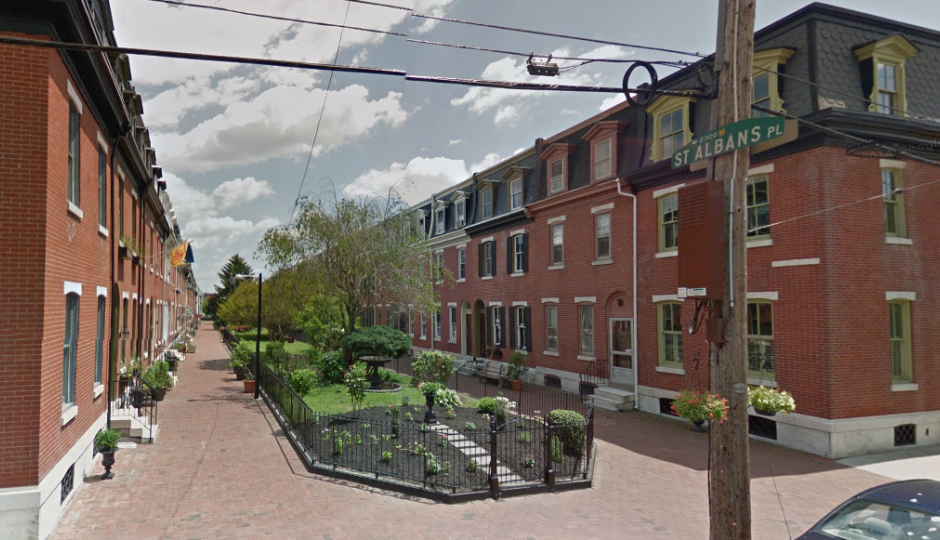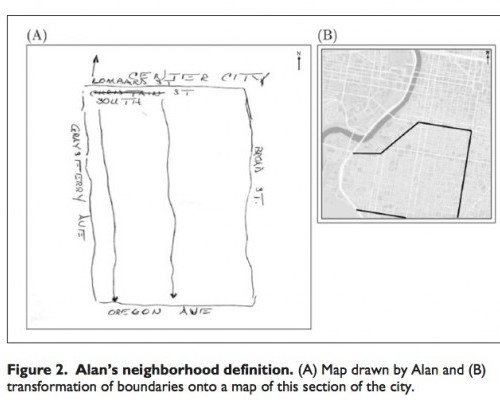“Newbold” or Just “South Philly”? How Race Shapes Our Definition of Neighborhoods

Is this Graduate Hospital? Southwest Center City? South Philly? | Google maps.
Back in 2013, this magazine named the community southwest of Center City the “hottest neighborhood” in Philly. We called it Graduate Hospital—rather than Southcentral or South Philly, the monikers frequently used by longtime residents. It’s a common phenomenon. Newbies bark names like University City, Midtown Village and Newbold; old heads still use West Philadelphia, Gayborhood, and Point Breeze. And it’s not just neighborhood names that are fluid. So too are neighborhood boundaries, aside from obvious cutoffs (i.e. bridges, rivers, highways).
Now there’s a fascinating new study out of Harvard University that suggests the biggest driver of our wildly different perceptions about neighborhood identity is race.
A sociology doctoral student, Jackelyn Hwang, spent the summer of 2006 interviewing residents of the area variously called Graduate Hospital, Southwest Center City and South Philly. Hwang surveyed 56 residents of the area—most of them living in between South and Washington, Broad and the Schuylkill and—and asked them to draw mental maps of their neighborhood, name it and explain why they constituted the boundaries in the way they did.
One group of residents defined the neighborhood as a large, inclusive spatial area, broadly dubbed “South Philly,” and identified big arterial streets as the neighborhood’s boundaries: South, Broad, Gray’s Ferry and Oregon. The other group subdivided the area, perceiving their neighborhood as far smaller than the first group did, drawing boundaries that included people in similar socioeconomic tracts and excluded areas they perceived as being high crime. Look at these two renderings of the maps to get an idea:
It turns out that all of the residents who defined the neighborhood in the broader spatial context were African-American or mixed-race; practically everyone who defined it in the latter context were white. And the racial divide was consistent across socioeconomic status and education level among survey respondents, according to the study. Further, the black residents perceived the reclassified boundaries being drawn by their new neighbors as alienating; a mechanism used by City Hall and gentrifiers to push out long-time residents. As one respondent said:
They are creating borders. It’s all politics, but it’s all still South Philly. They are just trying to push people out . . . They are trying to call it Center City, but it’s not. It’s South Philly.
Interestingly, the white respondents tended to describe themselves as living apart from the areas with crime and drugs. No matter where they lived in the neighborhood, they defined themselves as living north of the rougher area:
While violent crime and drug sales certainly did take place in the southern areas of the research site, this activity was often inconsistent with the boundaries that these respondents drew.
The study concludes that race is driving these different perceptions about the same neighborhood. But I wonder if other factors but not be just as important. The old/new divide in the sample of respondents could also account for the split. The black people interviewed had a median length of 23 years in the area, whereas the white people had a median length of 5 years. And the one minority person interviewed who had lived in the neighborhood for less than five years, actually had consistent opinions with the white demographic.
Graduate Hospital (or, South Philly) has seen a demographic shift in which the overwhelming majority of new residents are white and the vast majority of old residents are black. That’s black vs white, as much as it’s old vs new. What if researchers had asked the same questions of new and old residents on the other side of Broad, where the old-timers tend to be white, not black? My guess is that the differing perceptions about the neighborhood would still exist—not along racial lines, but between newbies and old heads.

